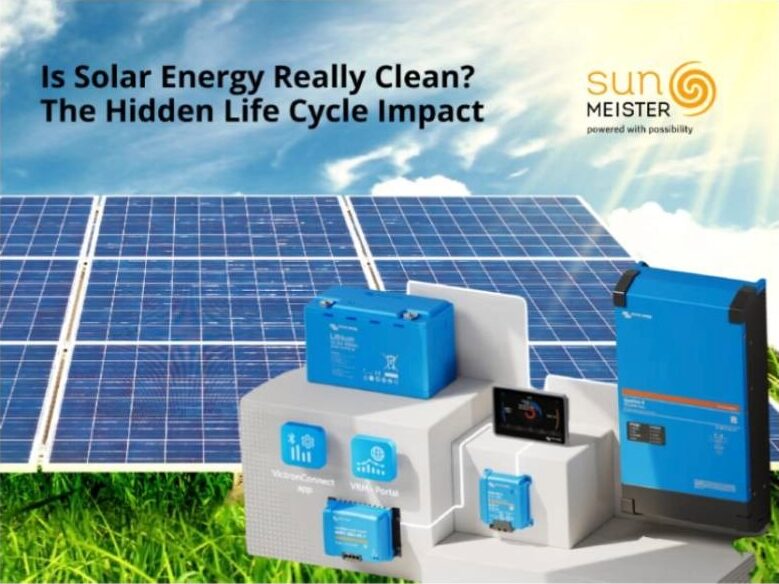Solar energy is often celebrated for its clean and sustainable nature. While it’s true that solar panels produce electricity without emitting greenhouse gases during operation, it’s essential to consider the entire life cycle of solar energy systems to understand their overall environmental impact.
Understanding the Life Cycle of Solar Panels
The life cycle of a solar panel encompasses several stages: raw material extraction, manufacturing, transportation, installation, operation, and end-of-life disposal or recycling. Each phase contributes to the overall environmental footprint of solar energy.
Manufacturing Emissions: A Closer Look
The production of solar panels involves energy-intensive processes, including the extraction and processing of raw materials like polysilicon, glass, and metals. These processes contribute to greenhouse gas emissions. However, studies have shown that the carbon footprint of solar panel manufacturing is relatively low compared to fossil fuel-based energy sources. For instance, solar panels emit approximately 50 grams of CO₂ per kilowatt-hour (kWh) produced in their initial years, becoming carbon-neutral within three years of operation.
Operational Phase: Zero Emissions
Once installed, solar panels generate electricity without emitting carbon dioxide, methane, sulfur oxides, or nitrogen oxides. This zero-emission operation significantly reduces air pollution and mitigates climate change impacts.
End-of-Life Considerations and Recycling
As solar panels reach the end of their 25-30-year lifespan, proper disposal and recycling become crucial. In India, solar panel waste is projected to reach 600,000 tonnes by 2030 . Recycling initiatives are essential to recover valuable materials and prevent environmental contamination. Organisations like Earth Sense Recycle in Chennai are working towards sustainable recycling solutions.
Enhancing Sustainability with Victron Energy Products
At Sunmeister, we are committed to providing sustainable solar solutions. Our partnership with Victron Energy ensures that our systems are efficient, reliable, and environmentally friendly. Key components include:
Victron MPPT Charge Controllers: Optimise energy harvest even in low-light conditions.
Victron MultiPlus and Quattro Inverter/Chargers: Ensure seamless transition between solar, battery, and grid power.
Victron Lithium Battery Systems: Provide high energy density and long cycle life.
Cerbo GX and GX Touch Displays: Offer intuitive monitoring and control via the Victron VRM portal.
Explore our range of Victron Energy products here: Sunmeister – Victron Energy Products
Conclusion
While solar energy isn’t entirely free from environmental impacts, especially during manufacturing and end-of-life phases, its overall benefits far outweigh the drawbacks. By choosing high-quality components and supporting recycling initiatives, homeowners can ensure that their solar energy systems remain a clean and sustainable choice for the future.
References:
1. Solaris Renewables – What Is the Carbon Footprint of Solar Panel Manufacturing?Solaris Renewables
2. Greenly – What is the LCA of Solar Panels?Greenly
3. The Guardian – Clean energy’s dirty secret: the trail of waste left by India’s solar power boomThe Guardian
4. Earth Sense Recycle – Solar Panel RecyclingEarth Sense Recycle
5. Sunmeister – Victron Energy Products
Embracing solar energy is a smart and sustainable choice. By understanding its life cycle impacts and taking proactive steps towards responsible usage and recycling, we can ensure a cleaner and greener future for all.

